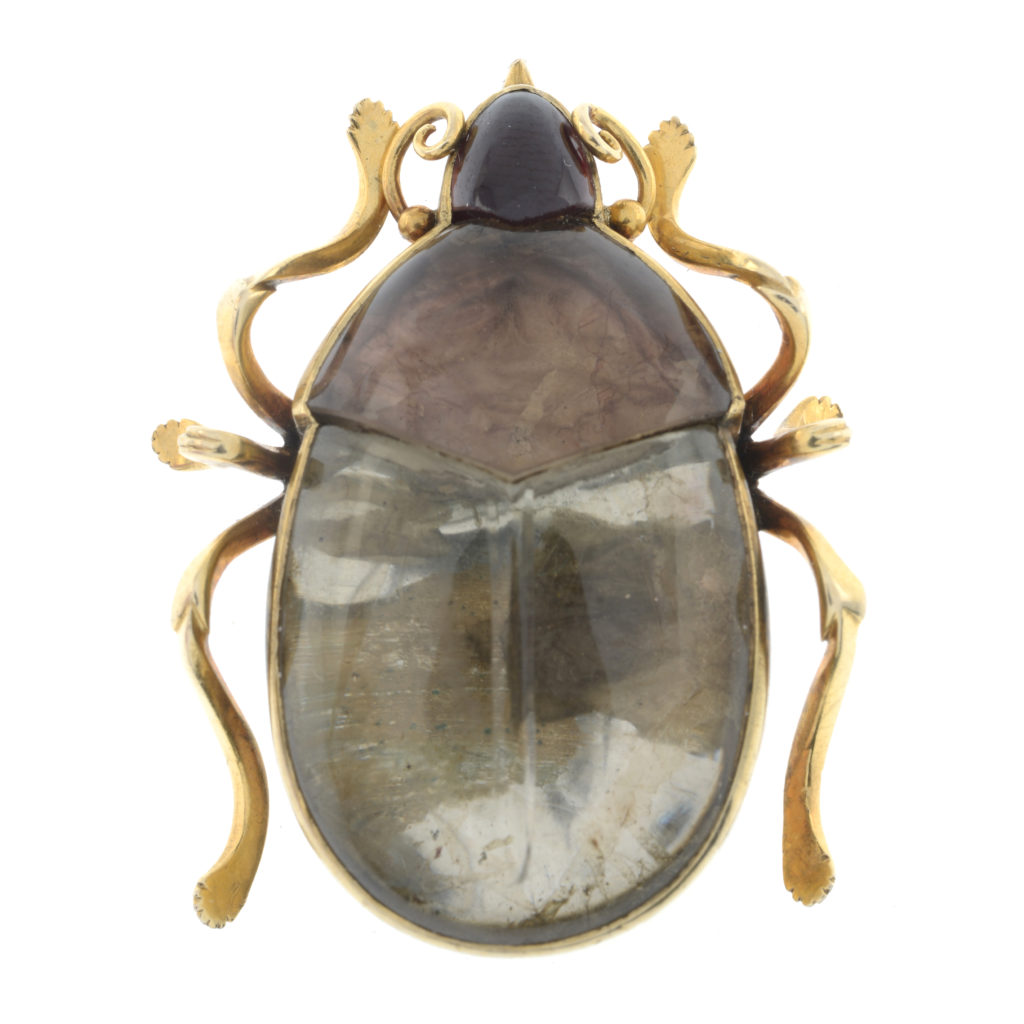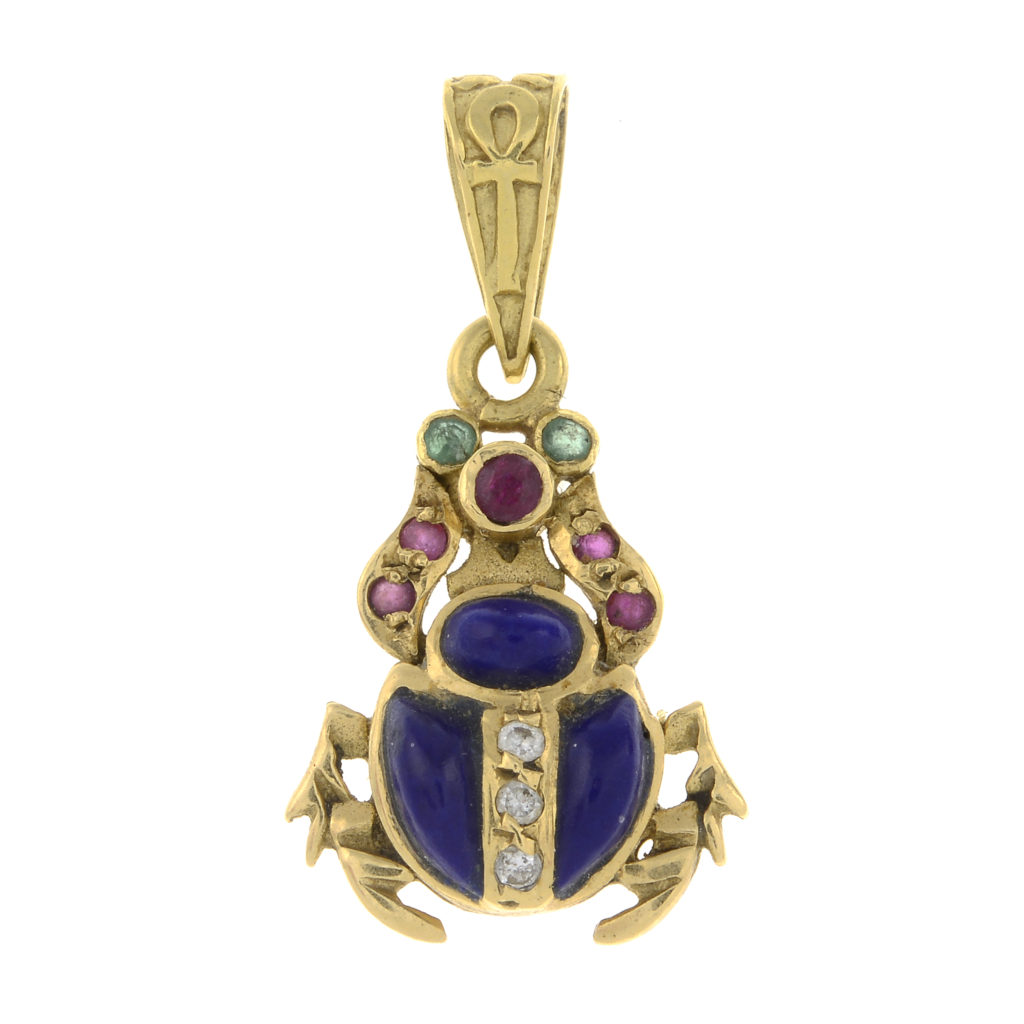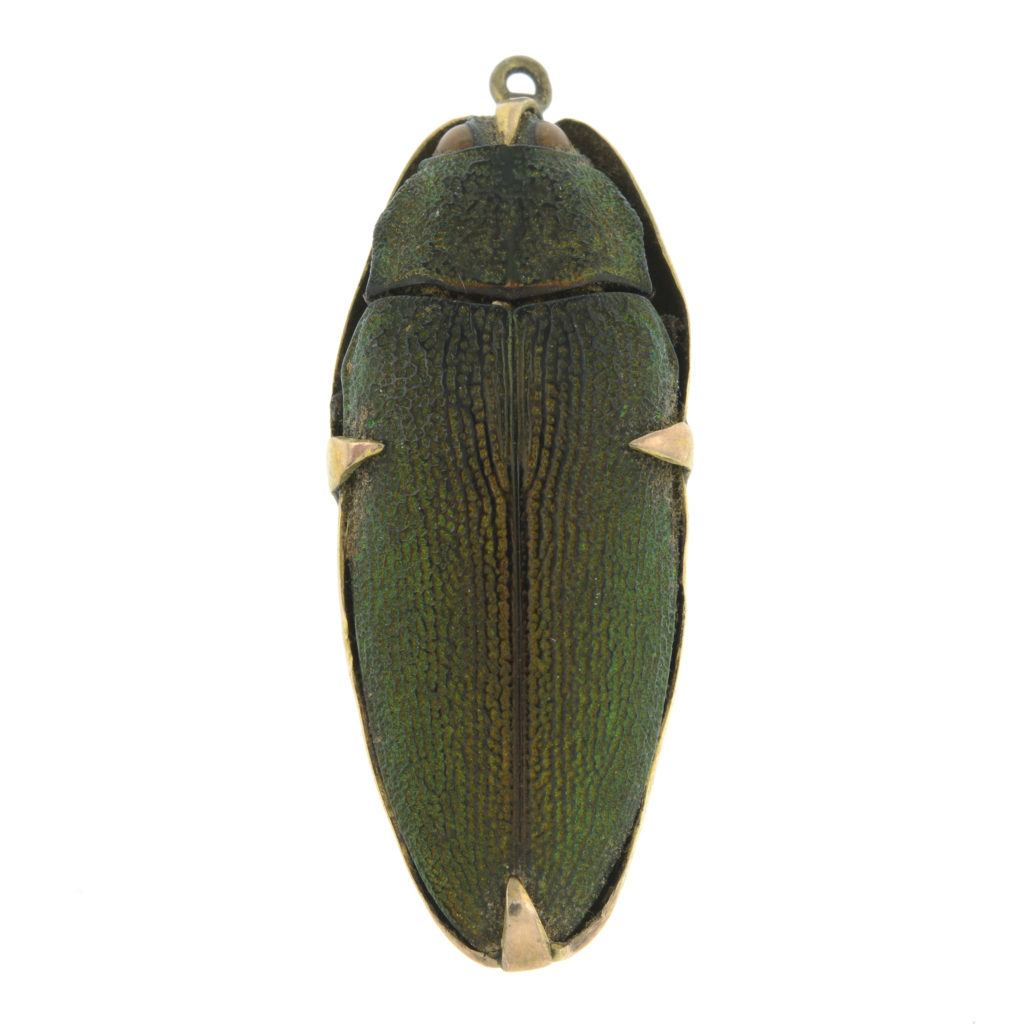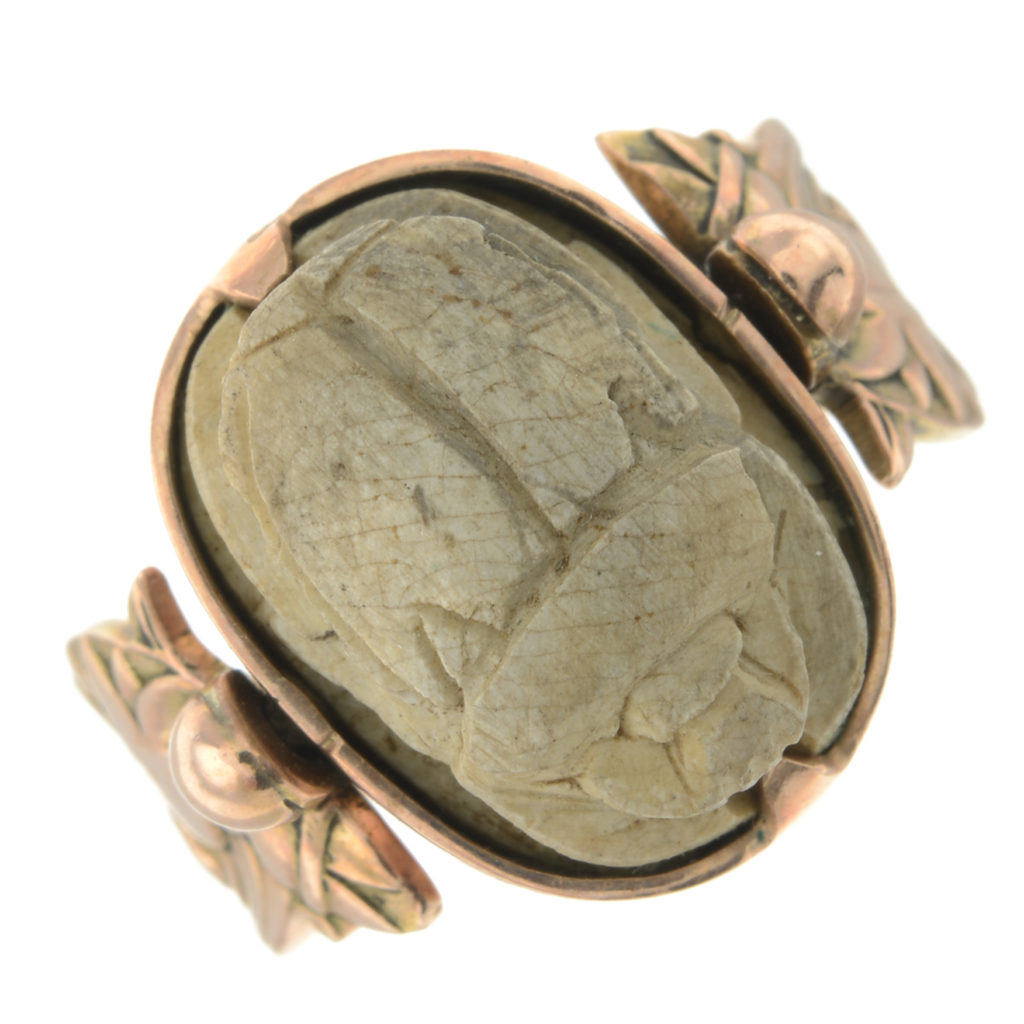Scarab beetle jewellery is often associated with Ancient Egypt. We'll look at its origins in this ancient culture, the Egyptian Revival movement of the 19th & 20th centuries, as well as its popularity today.
Ancient Egyptian Religion
The Ancient Egyptians were a polytheistic society, meaning they worshipped multiple deities. They turned to nature to find their gods and viewed natural phenomena as examples of divine force. The Egyptians had one of the most complicated pantheons that we see in the ancient world, many deities existed in many forms with many faces. Their gods were, in many ways, allegorical representations of abstract theories. They served almost as explanations for things that were otherwise unexplainable. Life, death, and creation were among these otherwise unexplainable things.
Scarab Beetles
One of the most important symbols in Ancient Egypt, at the heart of the intersection between religion and nature – was the scarab beetle. The Egyptians viewed the scarab as a physical manifestation of the journey of the sun. When they saw the way the beetle would roll balls of dung, they related it to the belief that the sun rolled across the sky. They also saw how the baby beetles would emerge from the dung balls, and assumed they were born from nothingness. This idea of creation from nothing was closely linked to divinity. Thus, scarabs became symbolic of the divine cycle; the sun, birth, and regeneration.
Khepri
One of the ways that this symbolic meaning manifested itself was in the scarab-faced god Khepri. The Egyptians viewed the voyage of the sun across the sky as a journey of life. In the morning, the sun is born – it is young. By midday, it has grown, and when it sets it regenerates and the cycle begins again. The three parts of its cycle were therefore split into three gods. Khepri was associated with sunrise, Ra with midday, and Atum with the evening. These were not completely different gods, rather, they were parts of the god Ra who was the manifestation of the sun and the king of the gods.
In visual representations, Khepri is shown simply as the beetle, with wings outstretched. Or he is something anthropomorphised, a human’s body but with a scarab as his head.
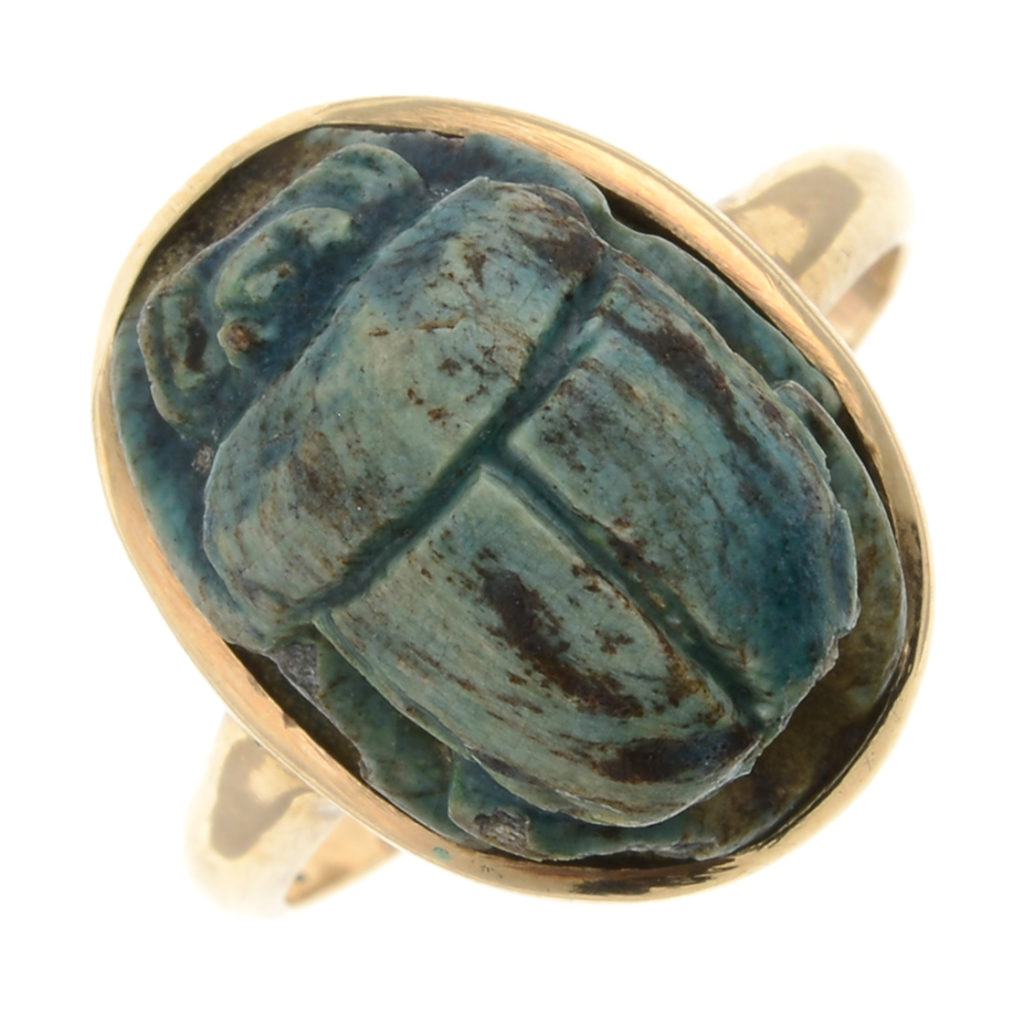
Scarab Beetle Jewellery
The scarab beetle held great significance in Egyptian religion, making it a popular choice for amulets, often crafted into jewellery or pendants. These scarab-shaped amulets spread widely across the Egyptian empire, especially during the Middle Kingdom (around 2000 BC). A common way they were incorporated into ancient jewellery was through swivel rings. With vast numbers of these amulets produced, many are now housed in museums worldwide, including the Met and the V&A.
Egyptian Revival & Scarab Beetle Jewellery
Revival jewellery is the name given to the tradition of seeking inspiration from the past. Often designers and jewellers will reimagine patterns or motifs there were emblematic of a time period and rework them for a contemporary audience. These trends tend to ebb and flow, changing depending on the culture of the time. In the 19th and 20th century, there was a huge increase in archaeological discoveries. Consequently, ancient civilisations became a popular source of inspiration, including the ancient Egyptians.
Following the trend of Egyptian revival, many jewellers in the 20th century sought to emulate the jewels found during these archaeological excavations. This was likely prompted by an increased awareness of Egyptian culture due to the construction of the Suez Canal in 1869. Similarly, the excitement of the discovery of Tutankhamun’s tomb in the early 20th century.
The rich colours of the ancient world served as fertile ground for jewellers to build inspiration upon. Here at Fellows, we have had the pleasure of working with large amounts of Egyptian revival. Much of it, modelled on the scarab motif.
In our upcoming auction on the 18th July we have two examples. The first is a mounted scarab pendant. The second is a scarab swivel ring.
If you'd like to find out more about specific designers who were part of the Egyptian revival, you can read our blog on Charles Horner. Additionally, to see previous lots we have sold, you can explore our auction archives.

